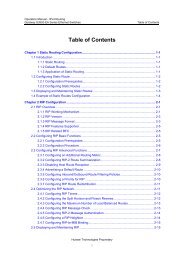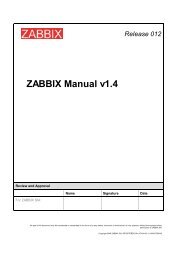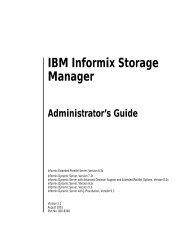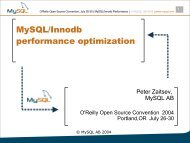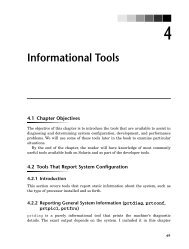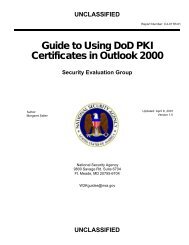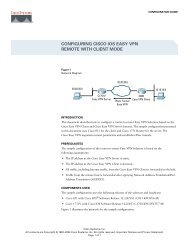OpenVPN Access Server System Administrator Guide
OpenVPN Access Server System Administrator Guide
OpenVPN Access Server System Administrator Guide
You also want an ePaper? Increase the reach of your titles
YUMPU automatically turns print PDFs into web optimized ePapers that Google loves.
1 Introduction<br />
The <strong>OpenVPN</strong> <strong>Access</strong> <strong>Server</strong> consists of a set of installation and configuration tools which allow<br />
for simple and rapid deployment of VPN remote access solutions using the <strong>OpenVPN</strong> open source<br />
project. The <strong>Access</strong> <strong>Server</strong> software builds upon the usability and popularity of <strong>OpenVPN</strong>, while<br />
easing VPN configuration and deployment by providing the following features:<br />
1. Simplified server configuration<br />
<strong>Access</strong> <strong>Server</strong> presents the administrator with only the most useful of the many<br />
configuration options supported by the sophisticated <strong>OpenVPN</strong> server and clients. An<br />
easy-to-use, Web-based configuration interface makes setting up and maintaining the<br />
<strong>Access</strong> <strong>Server</strong> deployment straight-forward and efficient.<br />
2. Support for external user authentication database<br />
Rather than requiring you to create and manage credentials for each valid VPN user,<br />
<strong>OpenVPN</strong> <strong>Access</strong> <strong>Server</strong> offers the ability to integrate with existing user authentication<br />
systems using one of the following:<br />
1. PAM 1 : the system for authenticating user accounts on the Unix server<br />
2. an external LDAP or Active Directory server<br />
3. one or more external RADIUS servers<br />
3. Easy intuitive Web-Based client access<br />
Once a user fires up a Web browser they can then enter their credentials and connect to the<br />
VPN. In addition a user can download a pre-configured Windows installer for their<br />
Windows Operating <strong>System</strong>. Since the installer file was dynamically generated specifically<br />
for the user in question, that user can instantly connect to the VPN without need for<br />
additional client-side configuration.<br />
4. Compatibility with a large base of <strong>OpenVPN</strong> clients<br />
An authenticated user can also download an <strong>OpenVPN</strong> client configuration file (also<br />
generated specifically for the user) from the Connect Client and use it with an <strong>OpenVPN</strong><br />
v2.1+ client other than the Windows GUI client. In this way, <strong>OpenVPN</strong> <strong>Access</strong> <strong>Server</strong> is<br />
immediately compatible with <strong>OpenVPN</strong> clients running on non-Windows platforms, such<br />
as the Tunnelblick client on MacOSX and the Community Projects <strong>OpenVPN</strong> client on<br />
Unix/Linux.<br />
Of course, none of these benefits would matter without the robust security of client-server<br />
communication provided by <strong>OpenVPN</strong>‟s use of SSL/TLS.<br />
1.1 <strong>Access</strong> <strong>Server</strong> Deployment Topology<br />
An <strong>OpenVPN</strong> <strong>Access</strong> <strong>Server</strong> deployment consists of one server, many clients and many users, as<br />
depicted in Figure 1. Each client machine in this topology uses the public IP network (the Internet)<br />
to communicate with the <strong>OpenVPN</strong> <strong>Access</strong> <strong>Server</strong> and thereby gains VPN-protected access to the<br />
private IP Network connected (if present).<br />
1 PAM stands for “Pluggable Authentication Modules,” the common system for authenticating<br />
users on a Unix system.<br />
<strong>OpenVPN</strong> <strong>Access</strong> <strong>Server</strong> <strong>System</strong> <strong>Administrator</strong> <strong>Guide</strong><br />
2




